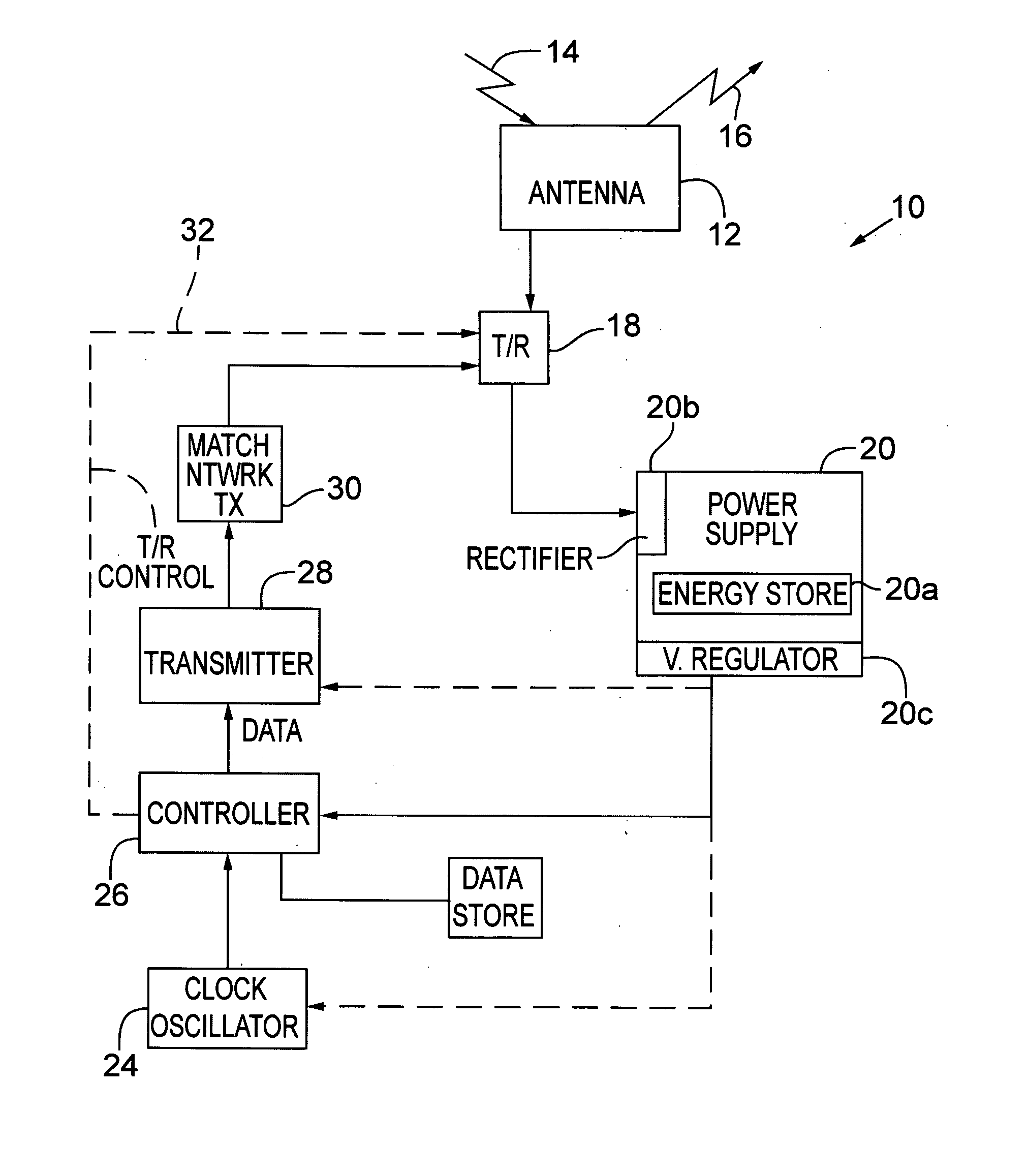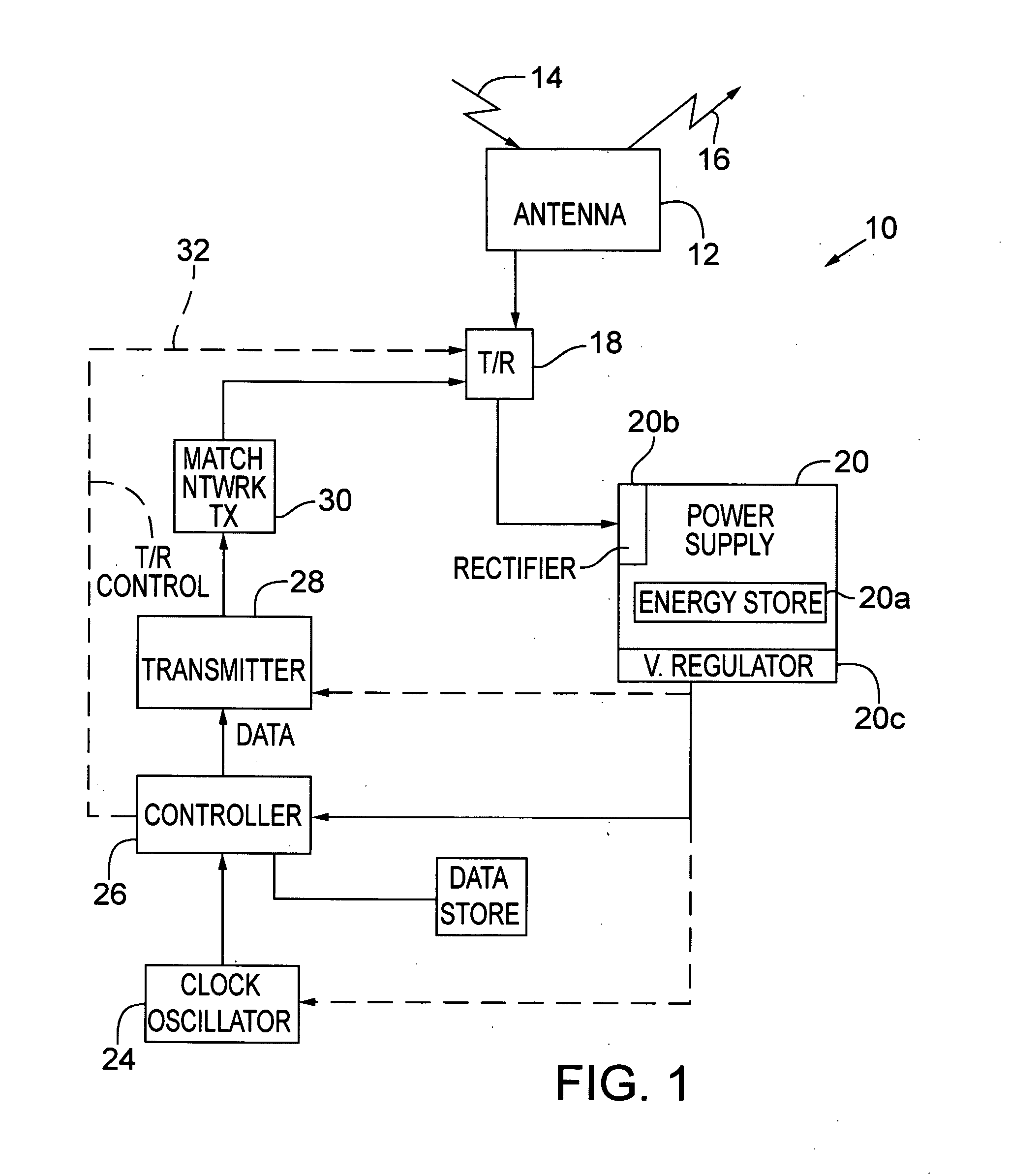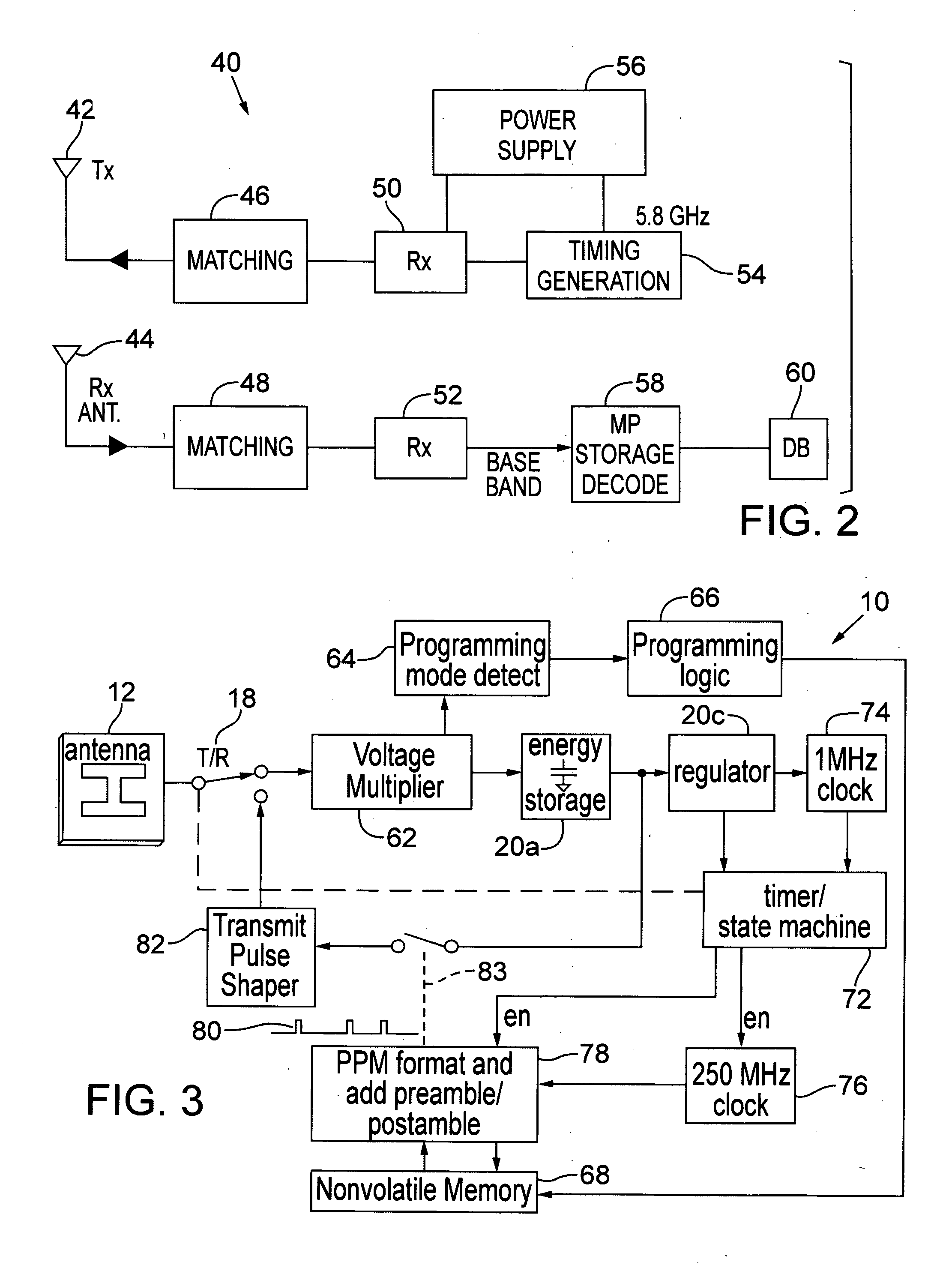Product identification tag device and reader
a product identification and tag technology, applied in the field of electronic reading identification tags, can solve the problems of large amount of energy required by the reader, large application range, and large antenna, and achieve the effects of optimizing efficiency and performance, minimizing rf interference, and maximizing tag power absorption
- Summary
- Abstract
- Description
- Claims
- Application Information
AI Technical Summary
Benefits of technology
Problems solved by technology
Method used
Image
Examples
Embodiment Construction
[0027] In the drawings, FIG. 1 illustrates, in a schematic block diagram, one embodiment of a circuit 10, shown simplified, that can be included on an RF ID tag according to the invention. In this embodiment, a single antenna 12 is formed on the chip, receiving power signals 14 and transmitting reply signals 16. The antenna is connected to a transmit / receive switch 18, which could also be a diplexer, so that when in receive mode the antenna conducts power pulses to a power supply 20 that preferably is a capacitive device as described in Pat. No. 6,480,699. A portion of the RF energy from the power signal 14 is captured and builds up over a period of time by capacitive storage in the power supply 20, which includes an energy store 20a for capacitive storage, as well as a rectifier 20b to produce DC current for the energy store, and a voltage regulator 20c to control output voltage from the power supply. Disclosure of these components is contained in the '699 patent, which is incorpor...
PUM
 Login to View More
Login to View More Abstract
Description
Claims
Application Information
 Login to View More
Login to View More - R&D
- Intellectual Property
- Life Sciences
- Materials
- Tech Scout
- Unparalleled Data Quality
- Higher Quality Content
- 60% Fewer Hallucinations
Browse by: Latest US Patents, China's latest patents, Technical Efficacy Thesaurus, Application Domain, Technology Topic, Popular Technical Reports.
© 2025 PatSnap. All rights reserved.Legal|Privacy policy|Modern Slavery Act Transparency Statement|Sitemap|About US| Contact US: help@patsnap.com



